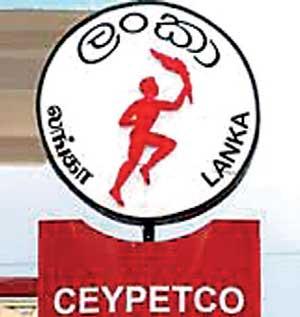03 Jun 2020 - {{hitsCtrl.values.hits}}
By Nishel Fernando
Sri Lanka’s 52 key state-owned enterprises (SOEs) have reduced their combined losses substantially to Rs.2.4 billion in 2019, from Rs.28 billion recorded in 2018, due to the enhanced performance of Ceylon Petroleum Corporation (CPC), amid lower oil prices.
But the record losses in the Ceylon Electricity Board (CEB) and SriLankan Airlines kept the overall performances of the SOEs in red.
In 2019, 32 SOEs posted profits of Rs.149 billion while the remaining 20 SOEs recorded losses amounting to Rs.151.4 billion, according to the 2019 annual report of the Finance Ministry.
“SOEs continued to be a cause for concern where, as has been the case, these 52 key SOEs recorded a loss of Rs.2.4 billion in 2019, although it is a significant improvement over the loss recorded in 2018 of Rs.28.0 billion,” the report stated.
However, the budgetary support to the key 52 SOEs exceeded their contribution to the state coffers by a record Rs.21.5 billion in 2019.
In 2019, the budgetary support to the key 52 SOEs amounted to Rs.49.2 billion, of which Rs.20.3 billion was recurrent expenditure, including salaries and overhead costs, while their contribution to the government coffers, by way of dividends and levies, amounted to only Rs.27.7 billion, which is 34 percent lower than that of 2018.

“This indicates that the SOEs have not been utilising their assets optimally to increase the return on investment by way of dividends, levies and capital investments,” the report pointed out.
In 2019, CPC made the largest improvement in terms of financial performances, as its net losses reduced to Rs.11.8 billion, from Rs.106.1 billion recorded in 2018, mainly due to the impact on operations stemming from the plunge in international oil prices in 2019.
Further, the Finance Ministry noted that CPC had been able to settle dues to the tune of Rs.48 billion, out of around Rs.85 billion owed to state banks, as at end-December 2019, through the accumulated funds in the Fuel Price Stabilisation Fund.
However, the ministry highlighted that the gains posted by CPC was eroded due to the increase in losses of the CEB and SriLankan Airlines.
The losses at the CEB in 2019 skyrocketed to Rs.85.4 billion, from Rs.30.4 billion in 2018, mainly driven by a decrease in the hydro generation of electricity due to drought, coupled with the increase in the fuel-based electricity purchases from the private sector.
The share of power generated by the CEB has decreased approximately by 6 percent during the year, from 78 percent in 2018 to 72 percent in 2019, whereas the share of fuel-based Independent Power Producers (IPPs) power generation has risen by 7 percent, from 11 percent in 2018, to 18 percent in 2019.
“Although the government policy is to enhance the renewable energy source to the total energy mix, the CEB was unable to considerably increase its NCRE (non-conventional renewable energy tariff) in energy mix in 2019, compared to 2018,” the Finance Ministry said.
The overall average cost of electricity at the selling point increased to Rs.23.29 per kWh in 2019, in comparison to Rs.19.12 per kWh in 2018, while the overall average selling price was Rs.16.62 per kWh, compared to Rs.16.29 per kWh in 2018.
Meanwhile, the losses at SriLankan Airlines increased by almost 156 percent YoY to Rs.44 billion in the 2018/19 financial year, mainly driven by a fourfold increase in foreign exchange losses and 24 percent rise in fuel costs.
The accumulated losses of SriLankan Airlines stood at Rs.230.6 billion, by March 31, 2019.
Bank of Ceylon, People’s Bank, National Savings Bank, the Employees’ Trust Fund Board and Sri Lanka Insurance Corporation recorded the highest profits among the 52 SOEs, during the year.
Further, the Sri Lanka Ports Authority and Airport and Aviation Services (Sri Lanka) Ltd enhanced their performances considerably with both entities posting over Rs.15 billion in profits, during the year.
The Telecommunication Regulatory Commission (TRCSL) remained as the top contributor to the state coffers in 2019, by contributing Rs.8.9 billion in a way of levies, although its contribution has dropped from Rs.21.8 billion recorded in 2018.
Chilaw Plantations Ltd was the only entity to return to black while the profitability of Lanka Sugar Company Ltd, Ceylon Fisheries Corporation, STC General Trading Company, Sri Lanka Rupavahini Corporation and Sri Jayewardenepura General Hospital ended in red during the year.
Despite the burden on the state coffers, the Finance Ministry emphasised that the SOEs continued to be a key element in the country’s economy with the total revenue of the 52 key SOEs recording an increase of 11 percent over 2018 to Rs.2.1 trillion in 2019, contributing to over 14 percent of GDP.
“The total revenue of the largest 20 SOEs is still almost 60 percent greater than the revenue recorded by the entities under the S&P SL20 Index of the Colombo Stock Exchange,” it noted.
The asset base of 52 key SOEs has increased by 10.5 percent in 2019, compared to 2018.
However, Sri Lanka has over 400 odd SOEs, including non-commercial SOEs, with a presence in almost every sector of the economy.
The Treasury stated that the government is in the process of implementing reforms that are aimed at enhancing their governance structure by improving the composition of the boards of management, strengthening the balance sheets and creating scale of operations through strategic mergers and with economically viable and equitable pricing policies.
17 Nov 2024 41 minute ago
17 Nov 2024 3 hours ago
17 Nov 2024 3 hours ago
17 Nov 2024 3 hours ago
17 Nov 2024 5 hours ago